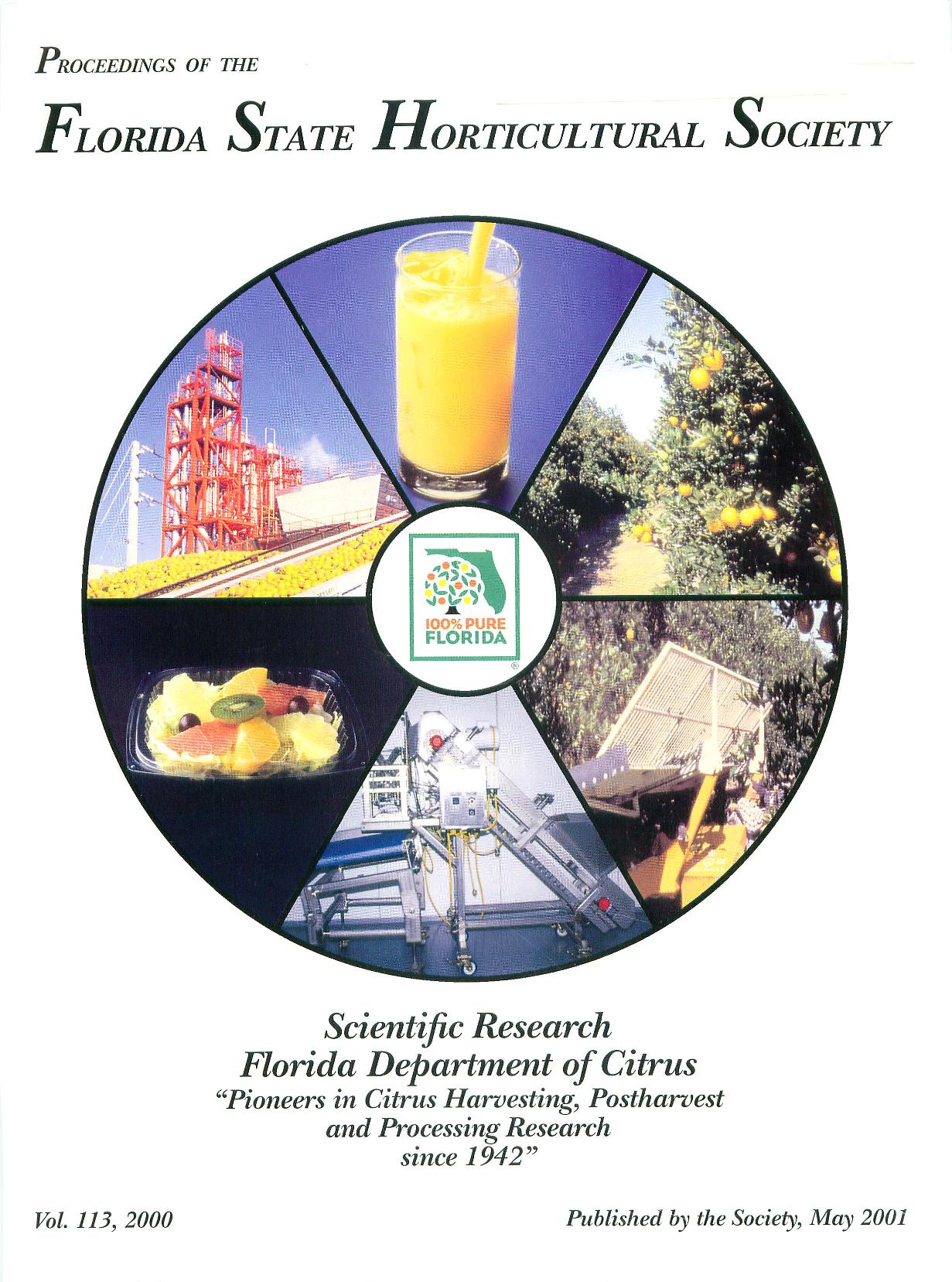Vegetable
Abstract
Trials were conducted in Spring and Fall 1999 inImmokalee, FL to test the efficacy of up to 19 compounds for
the control of late blight (Phytophthora infestans) and bacteri
al spot (Xanthomonas campestris. pv. vesicatoria) on toma
toes. Test compounds included labeled and experimental
chemicals, biologicals, and SAR (systemic acquired resis
tance) inducers. Disease severity of bacterial spot on tomato
was low in the spring and was unaffected by spray treatments. In the fall trial, 14 of the 19 sprayed materials significantly reduced bacterial spot severity compared to the untreated control and achieved control equal to copper plus manzate. In the spring test, late blight severity reached 50% of plants in control plots and the disease severity as AUDPC was reduced, although not significantly, for 6 of the test compounds. In the fall, the severity of late blight was significantly reduced with most of the treatments (16 of 19). Yields in the spring were generally low due largely to environmental stress and were not significantly different from control plot yields. Yields from plants grown in the fall were higher and significance differences were observed between treatments. Copper and strobulin compounds consistently reduced disease severity and control by biologicals and experimental compounds was variable with rate and combinations while yields were unaffected.

